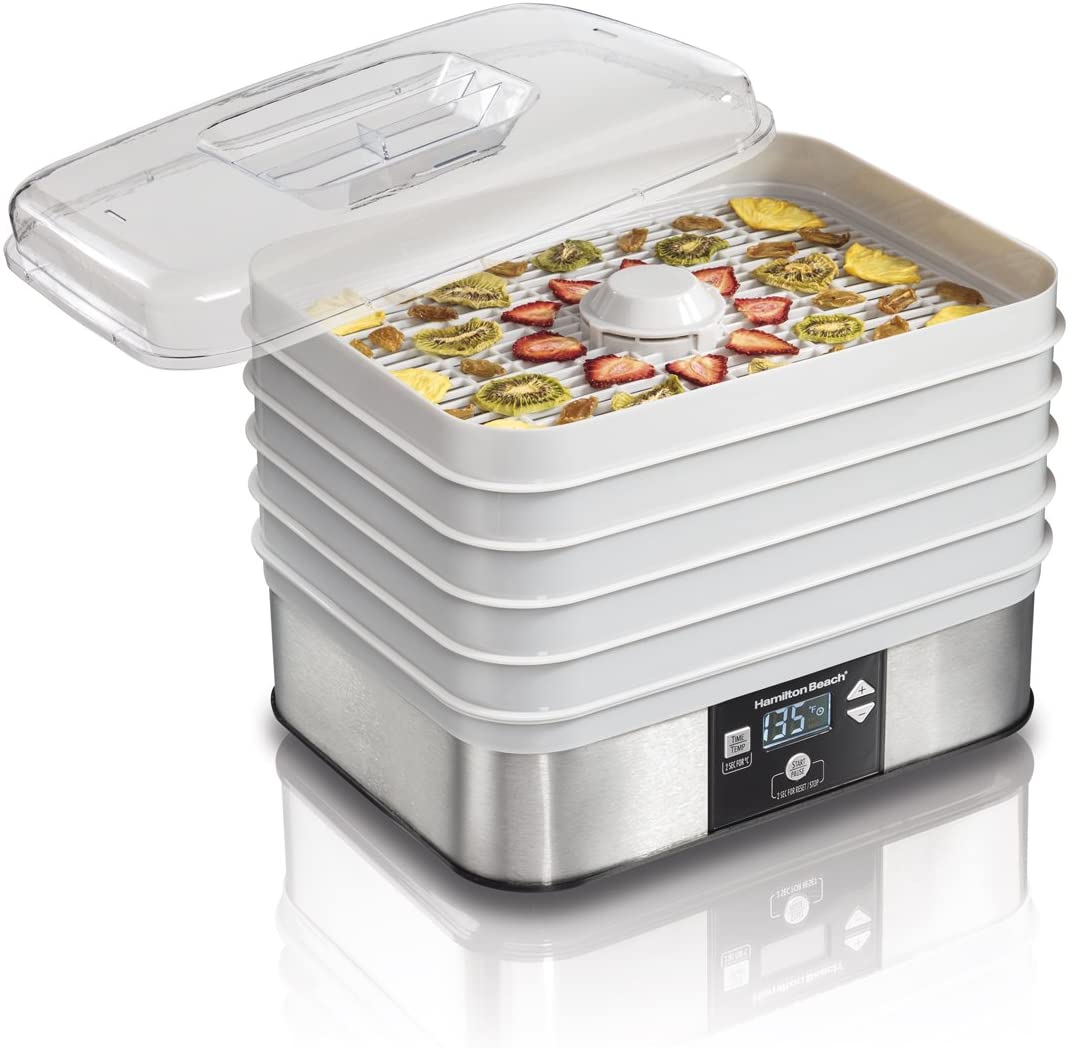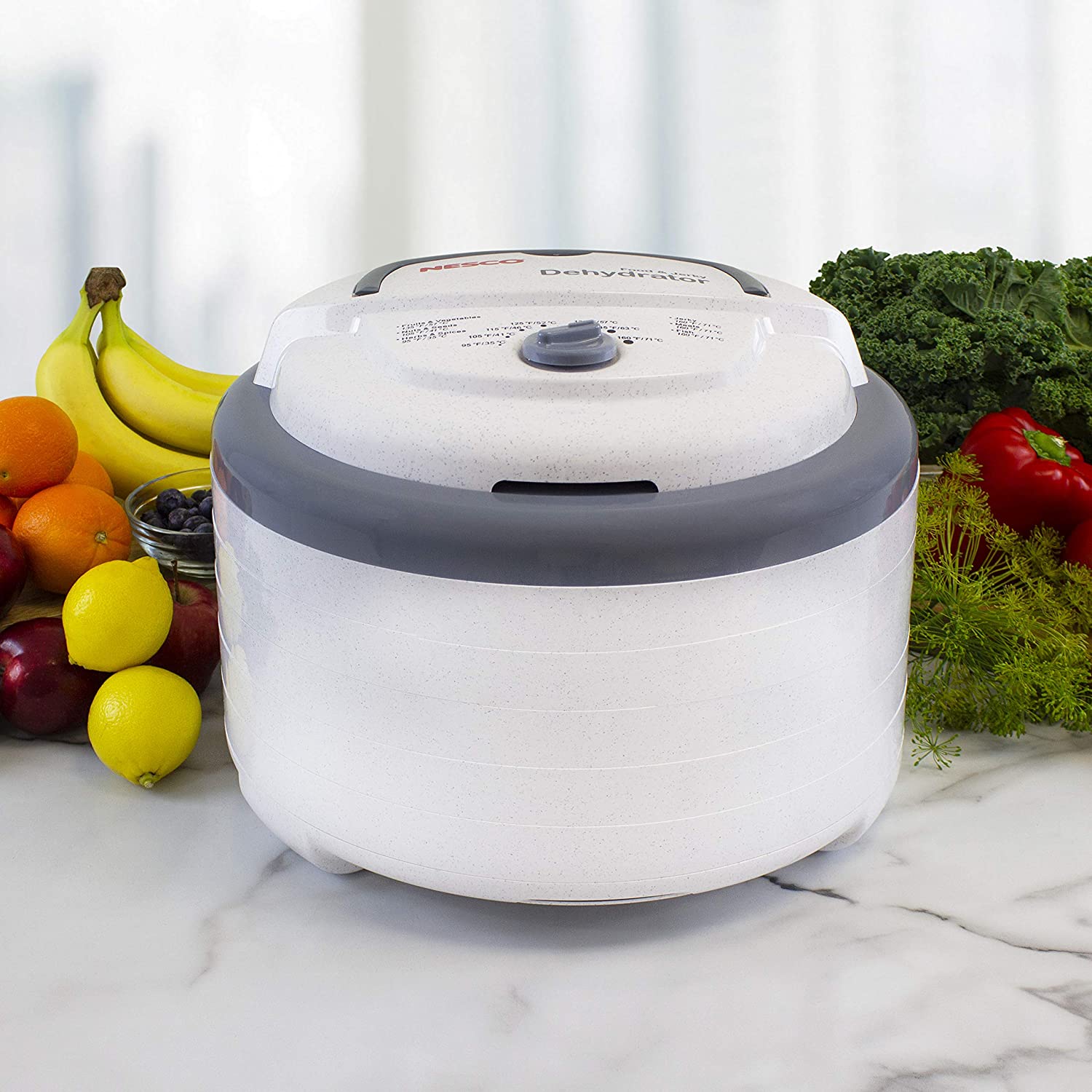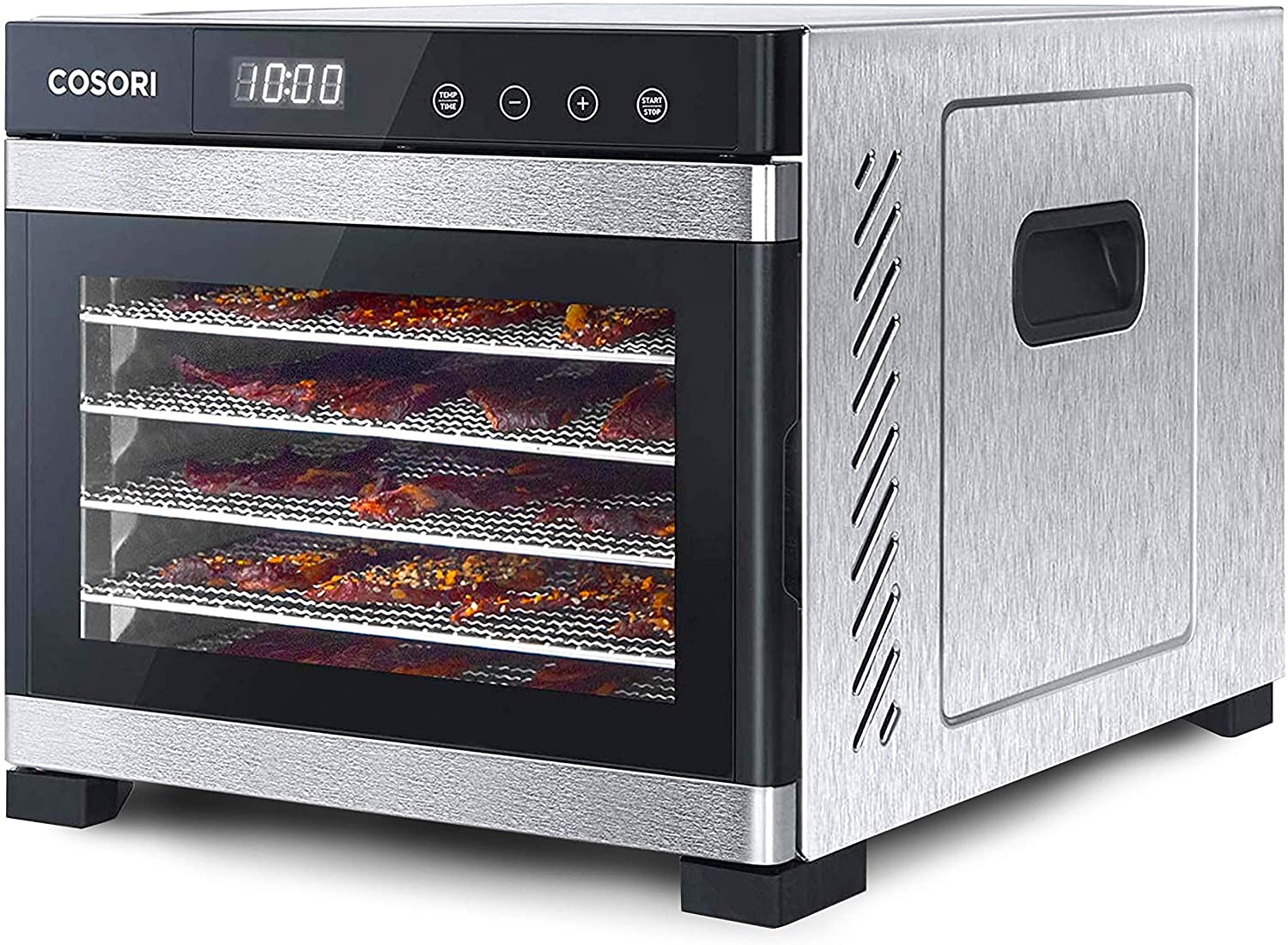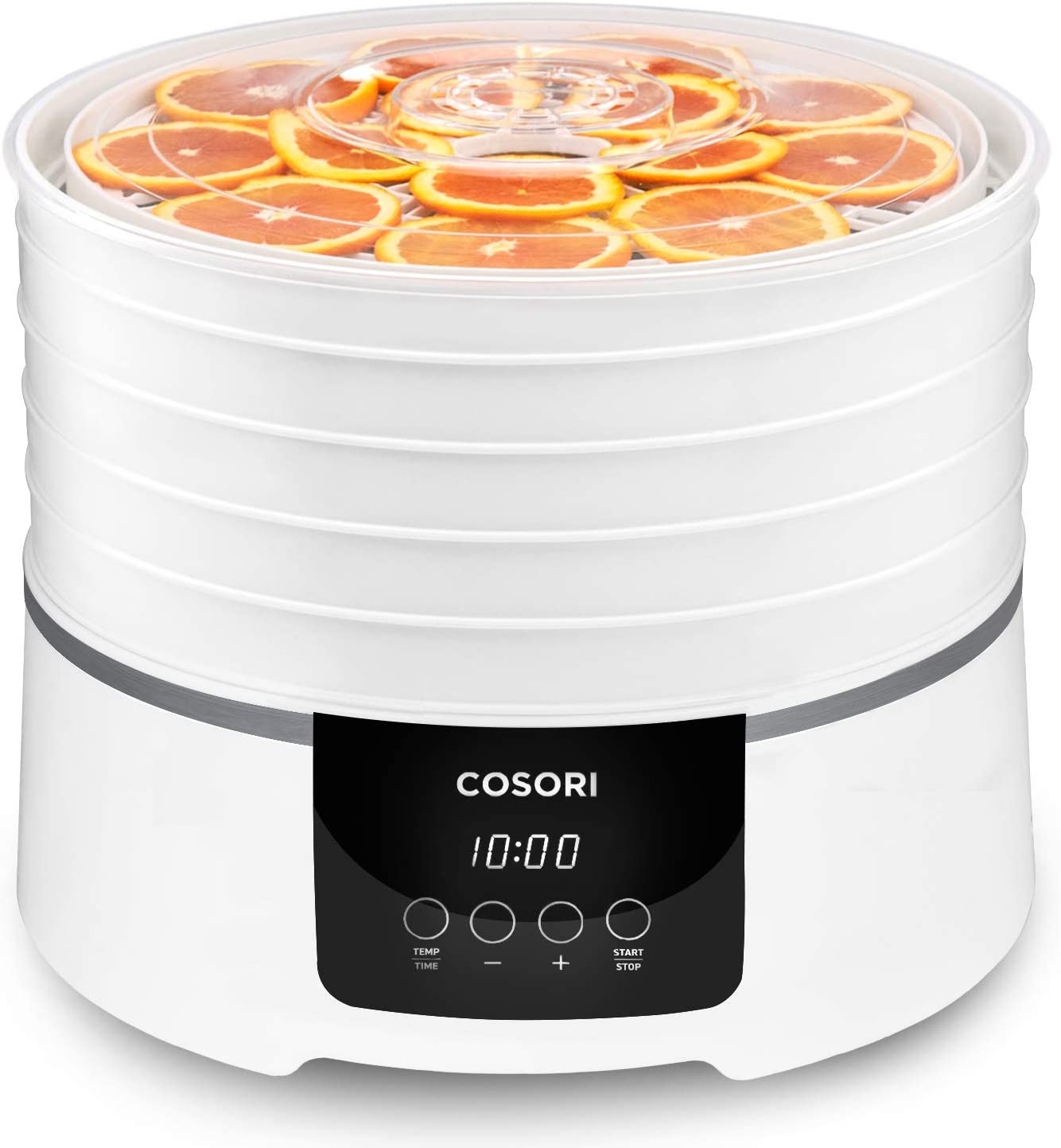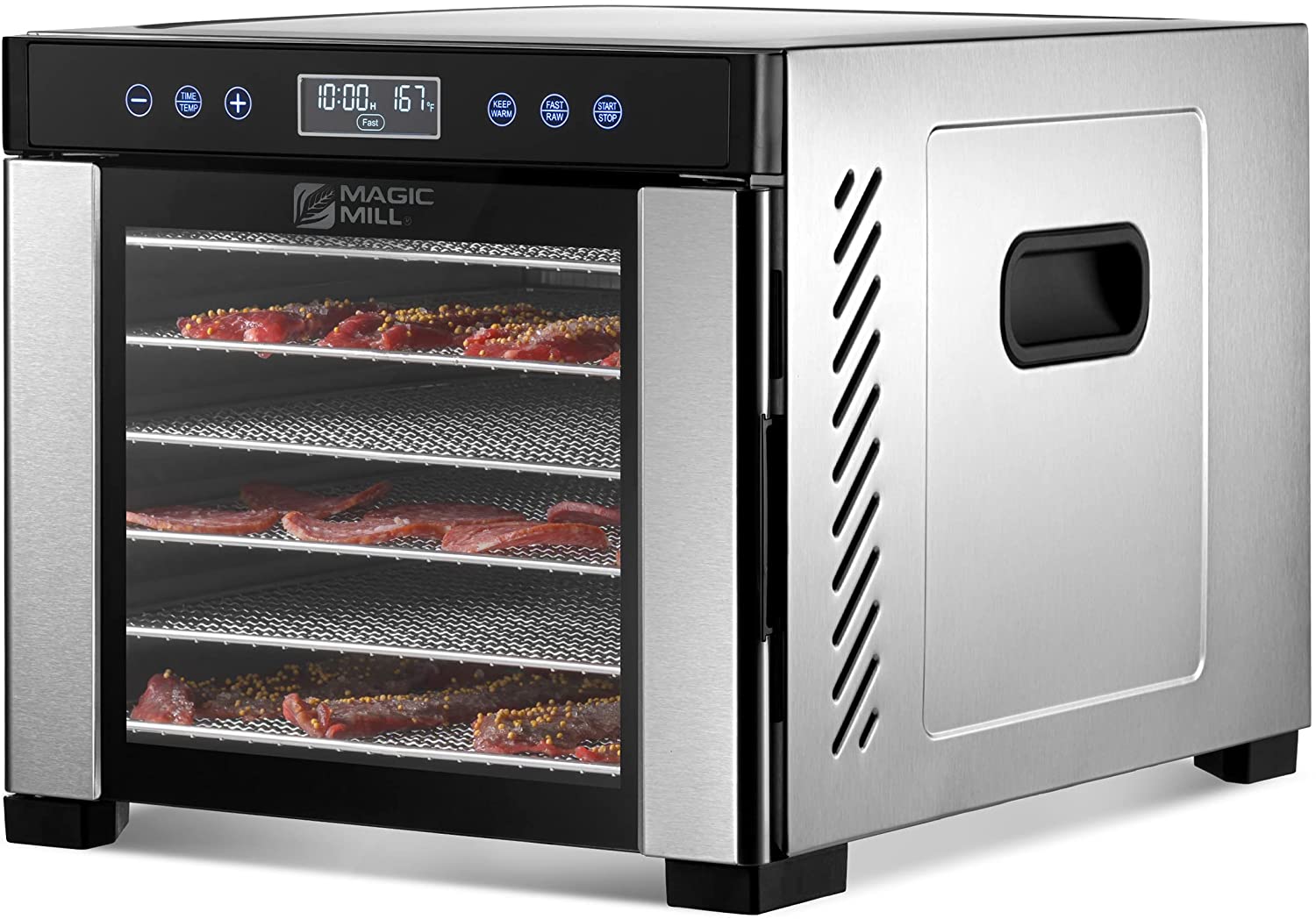The products and services mentioned below were selected independent of sales and advertising. However, Simplemost may receive a small commission from the purchase of any products or services through an affiliate link to the retailer's website.
From banana chips to homemade granola to fruit leather, food dehydrators allow you to make a variety of healthy snacks without any of the added sugar found in grocery store products — and at a fraction of the cost. Food dehydrators work by drying food at low temperatures over a long period of time. By utilizing heat and airflow to reduce the moisture content of foods, the flavors become more concentrated. Dehydration also extends the shelf life of food. Food dehydrators are also great for encouraging eating whole foods and reducing food waste. They’re incredibly cost-effective over their lifespan and allow owners to buy in bulk and shop for in-season fruits and vegetables.
Creating your own homemade dehydrated snacks often leans toward the healthier side because you can leave out items that are often lurking into store-bought packages like sugar, preservatives and additives. (Think dried fresh pasta made with only a handful of ingredients instead of twenty.) The creativity for what to dehydrate is endless, from jalapeno seasonings to zucchini chips to beef jerky to bread crumbs — you can even ferment your own yogurt. It’s not only food you can put in dehydrators — you can use these handy appliances to make potpourri and art projects, such as paper mache and dough art, or to dehydrate thinly sliced citrus fruits to string as holiday decor.
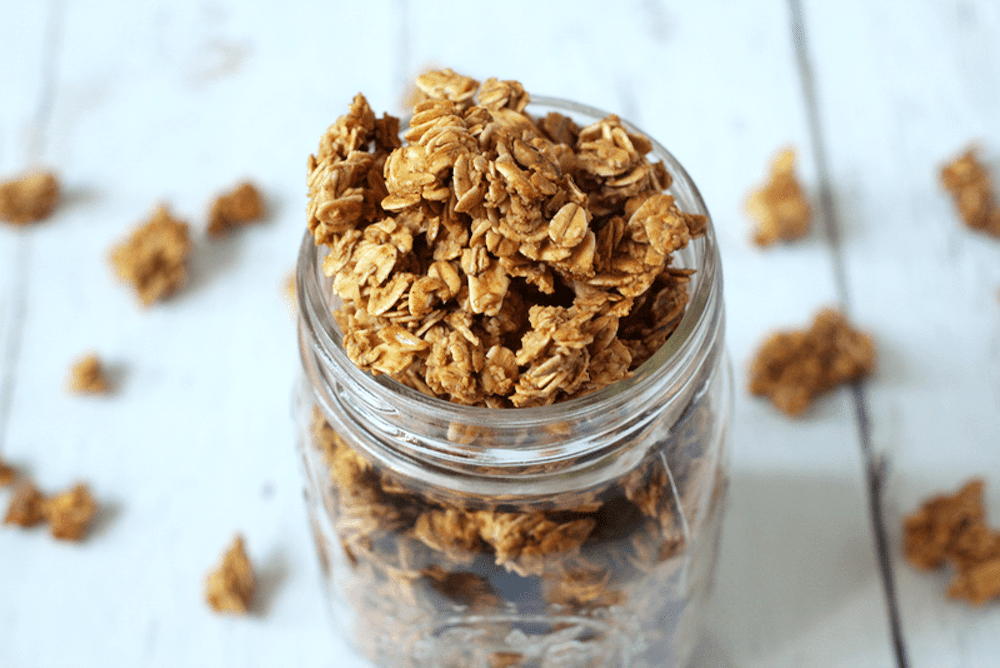
Sure, you could use an oven to dehydrate too, but they aren’t as energy-efficient, and some don’t operate at the low temperature required, which is under 200 degrees Fahrenheit. You could use a toaster oven instead, but only for small batches, as their rack space is limited by design. Food dehydrators have either stackable or pullout shelves, usually dependent on where the fan is located, and both types work well.
Our sister site Don’t Waste Your Money has a team of experts that spends hundreds of hours analyzing, testing and researching products to help consumers make informed purchasing decisions. There are their top picks for the best food dehydrators.
Hamilton Beach 32100A Digital Food Dehydrator
Perfect for beginners, this easy-to-use food dehydrator offers five stackable trays, allowing for good airflow management. The clear lid, adjustable thermostat and 48-hour timer give you more bang for your buck with this budget-friendly model. It also includes a fine-mesh sheet for drying small items like herbs and a solid sheet for making fruit rolls.
NESCO FD-75A Snackmaster Pro Food Dehydrator
While this dehydrator comes with four trays to begin with, an additional eight can be purchased and used together to maximize drying time. Home cooks will love the 600-watt motor, which speeds up drying time. The opaque exterior blocks harmful light to retain more of the food’s nutrients, too.
Cosori Premium Food Dehydrator Machine
Made with food-grade stainless steel, this Cosori model feels built to withstand longstanding wear and tear. Its sleek design makes it ideal for countertop display, while it operates quietly and efficiently. The bells and whistles, like the safety features and temperature controls, are also easy to maneuver.
Cosori Food Dehydrator & Dryer Machine
If you’re a first-time food dehydrator shopper, this simple machine will be a sure bet. Its digital temperature control allows you to heat to a precise degree, while the BPA-free plastic trays and auto shut-off allow for peace of mind.
Magic Mill Food Dehydrator Machine
For a relatively compact countertop appliance, this device holds a surprisingly ample amount of food. Due to the rear-mounted fan and steady air circulation, food dries evenly every time.
When deciding which food to dehydrate, the possibilities run the gamut. Here are 40 ideas to get you started. You can even make sun-dried tomatoes without the sun. The biggest thing to remember is to allow enough time for the process to complete, which is 6-10 hours for vegetables, plus a few more hours for fruits. To capture freshness and flavor for as long as possible, store dried food in mason jars or sealed bags.

